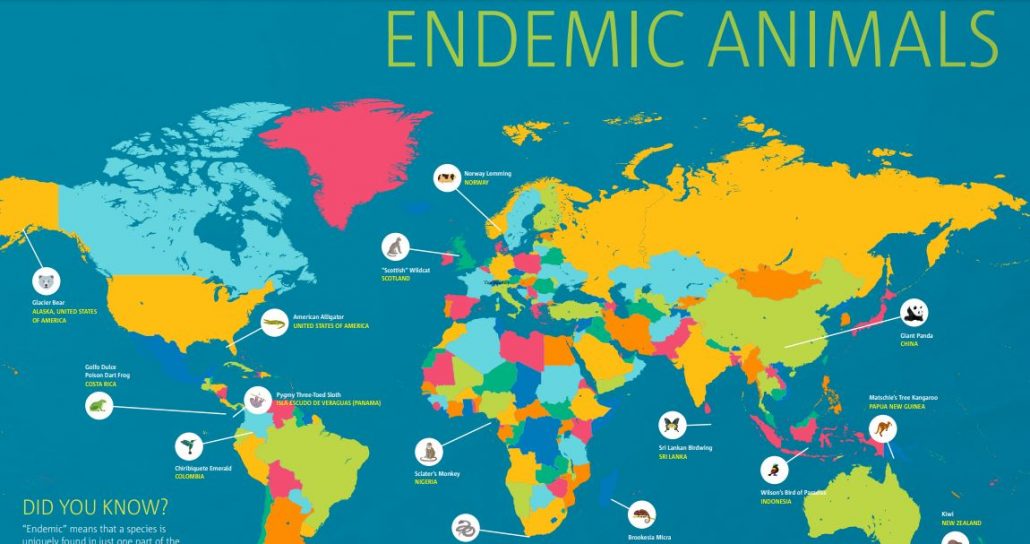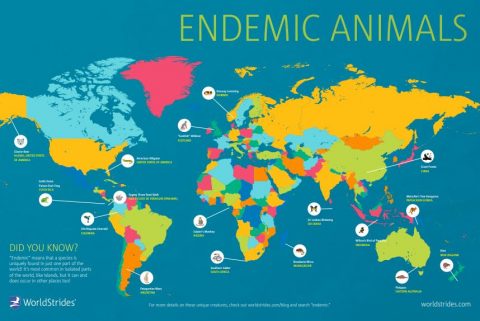Classroom Resources
Endemic Animals Around the World
“Endemic” refers to a species that is uniquely found in one part of the world, and that part only! These types of animals are most commonly found in more isolated parts of the globe, like islands, but they can be found in other places too.
Our map highlights some of these fascinating exclusive creatures. (Teachers – request one for your classroom here.)
Learn more about these amazing animals.
Giant Panda
Where: China
Not only are giant pandas endemic to China, but they are also considered a national treasure there. Though they are endemic to China, 27 zoos in 21 countries have giant pandas as part of worldwide conservation program, including three giant pandas who live at the Smithsonian National Zoo. There are fewer than 1,900 alive in the wild today.
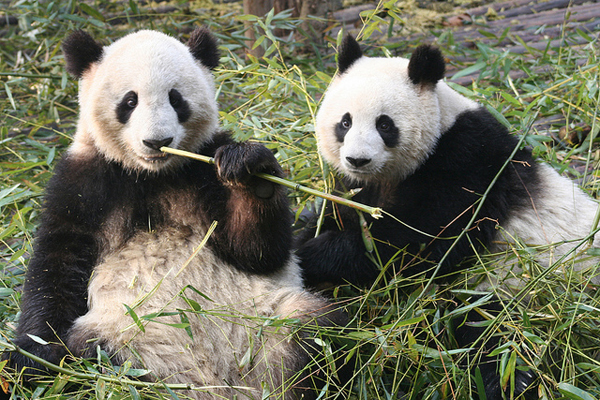
Norway Lemming
Where: Norway
Also known as the Norwegian lemming, this animal is very common in northern Fennoscandia, but the only vertebrate species endemic to the region.
Scottish Wildcat
Where: Scotland
Scottie dogs drool and cats rule in Scotland. The Scottish wildcat population advanced when they became isolated by the English Channel over 9,000 years ago. At first glance, they may look like your typical house cat, but wildcats actually have slightly larger brains and different pupil shapes than your average tabby.
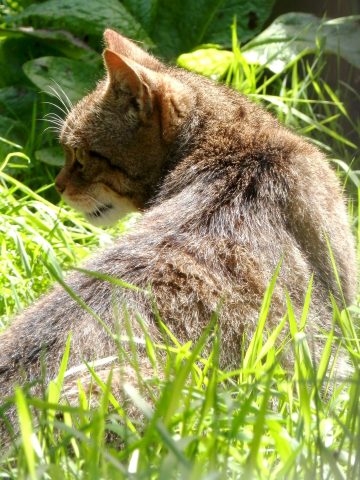
American Alligator
Where: Florida, USA
See you later alligator…well, not really, because alligators are very common in the southern United States. They may be thriving now, but at one point the American alligator was endangered and on the verge of extinction – a rare success story!
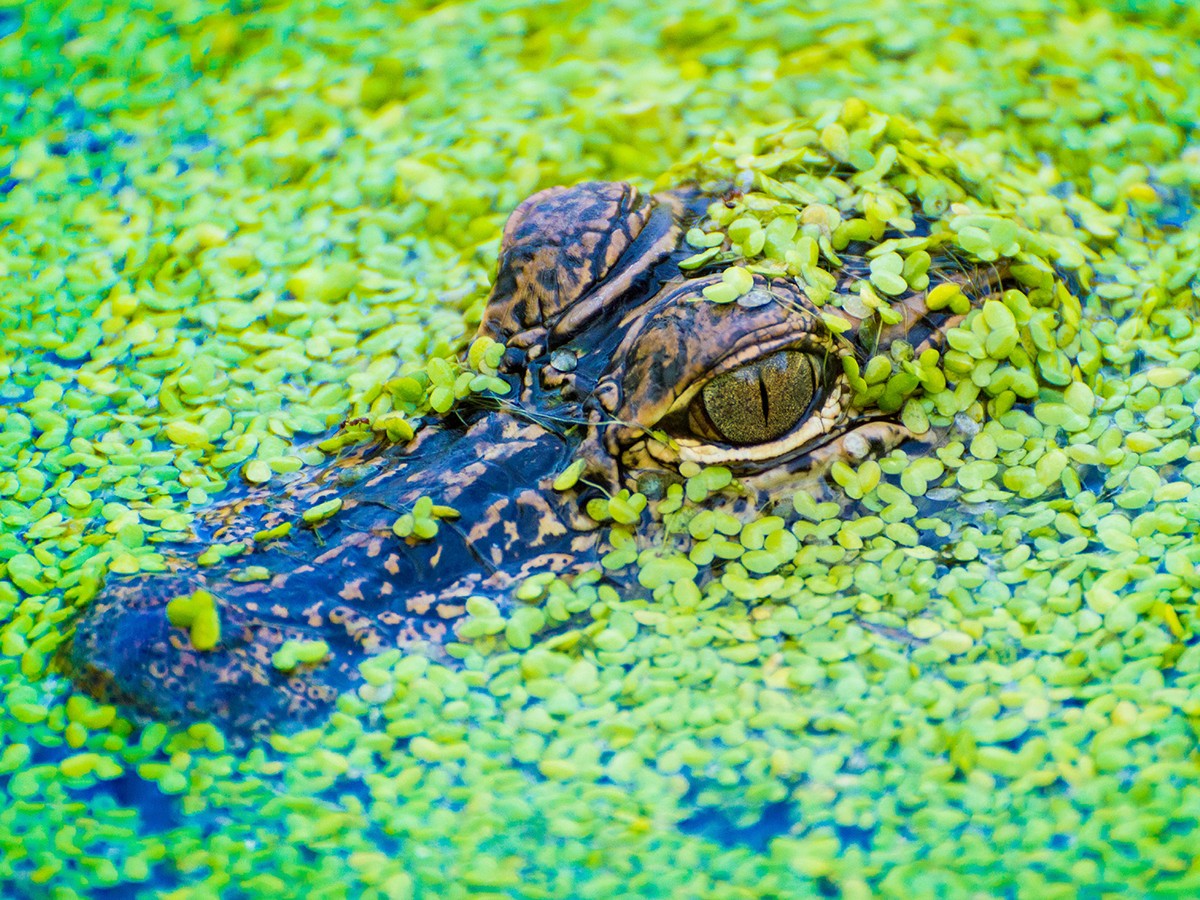
Pygmy Three-Toed Sloth
Where: Panama
The smallest of the sloths, this slow mover is endemic to Isla Escudo de Veraguas, a small island off the coast of Panama. In fact, it has been separate from the mainland of Panama for 9,000 years! So how small is small? Their body length is between 19 and 21 inches, and they usually weigh 5.5 – 7.7 pounds. All together now – awww!
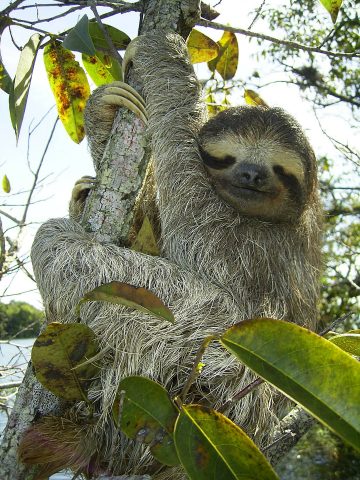
Poison Dart Frog
Where: Costa Rica and other humid Central and South America habitats
Colorful, but poisonous – really! The toxicity of a poison dart frog actually varies by type (and there are more than 100 types), but some are even so deadly that their poison could kill a person. They are tiny and tough to spot; some are less than an inch long!
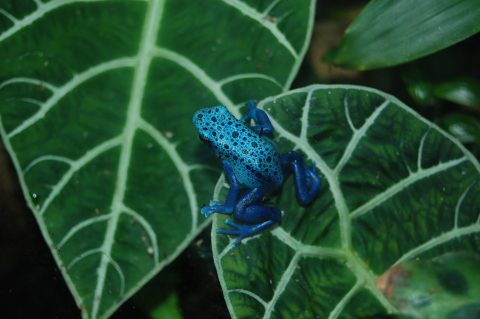
Glacier Bear
Where: Alaska, USA
Sometimes called the blue bear, the glacier bear is a type of American black bear with silver-blue or gray fur. Yes, that kind of a confusing description, but that’s because there is little scientific knowledge of why they look the way they do.
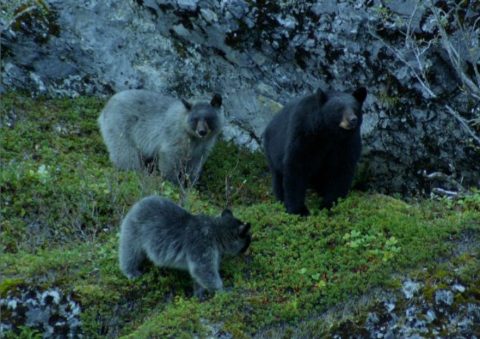
Chiribiquete Emerald
Where: Colombia
This beautiful, almost fluorescent blue and green bird is a species of hummingbird endemic to southern Colombia.
Sclater’s Monkey
Where: Nigeria
Only 11 small populations of this species of monkey have been confirmed to exist. They live in the low elevation areas of the coast of Nigeria, where they enjoy the swamp-like floodplain forests. Perhaps the most distinct feature? The white tufts of hair on each ear.
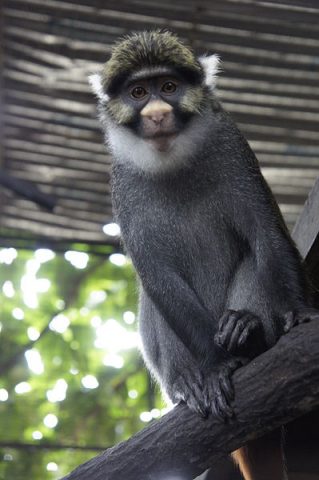
Patagonian Mara
Where: Argentina
Kangaroo who? The Patagonian mara may look like a cross between a kangaroo and a rabbit, but this herbivore is actually a large rodent. In fact, they are the fourth-largest rodent in the world, measuring about 18 inches in height.
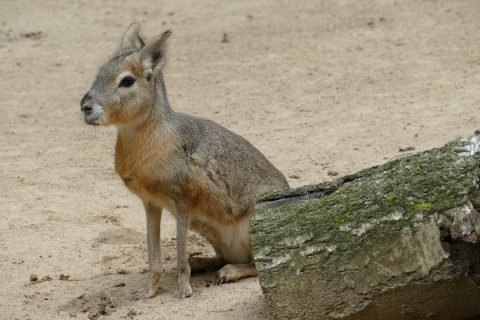
Southern Adder
Where: South Africa
Snakes alive! In South Africa! The southern adder is a venomous snake found in the low-lying coastal areas of the Western Cape, and get this – it has small horns above each eye!
Sri Lankan Birdwing
Where: Sri Lanka
This species of butterfly is found only in Sri Lanka, and is considered the official national butterfly of the country. It is the largest butterfly on the island, and its big black wings feature bright pops of yellow.
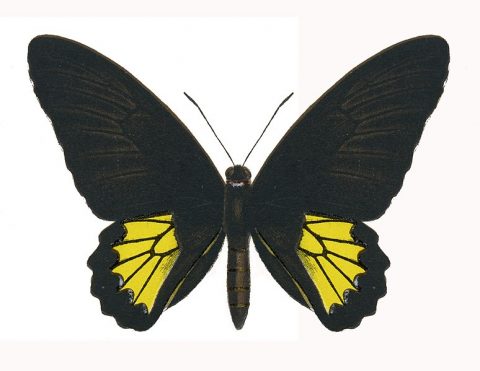
Brookesia Micra
Where: Madagascar
Itsy bitsy, teeny weeny…chameleon! The smallest species of chameleon known as the brookesia micra grow to only be 29 millimeters long. We’re talking about the size of a fingernail! And yes, they really do change color.
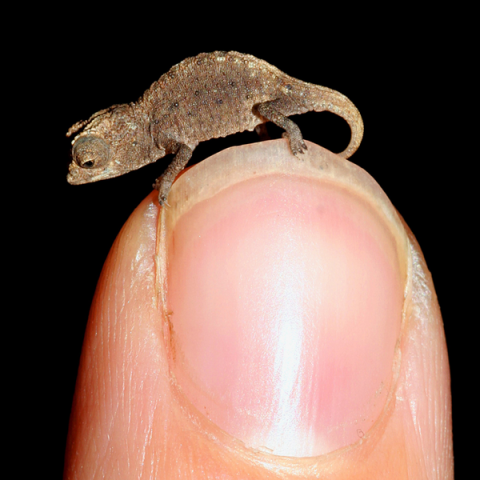
Wilson’s Bird of Paradise
Where: Indonesia
Just the name makes it sound beautiful, doesn’t it? One of the most colorful birds in the world, birds of paradise impress with bright pops of yellow and red, and of course its distinctive bright blue head and curled tail feathers. A truly unique looking animal!
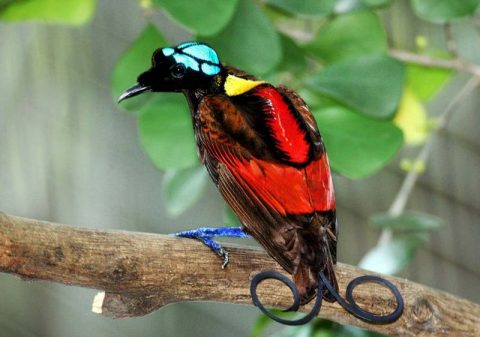
Platypus
Where: Eastern Australia
This semi-aquatic mammal is best known for its wide, duck-like bill. It has a friendly reputation, but did you know – males are venomous and have sharp stingers on the heels of their feet!
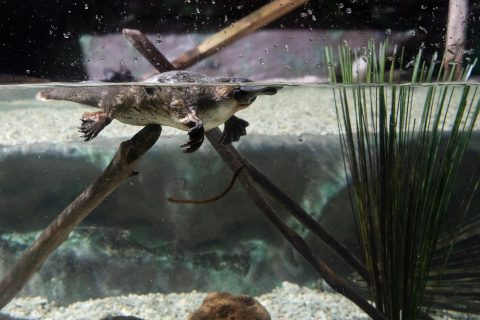
Kiwi
Where: New Zealand
The kiwi – not just a delicious fruit. A unique bird for sure, the kiwi cannot fly and has strong legs but no tail. It has become the national icon of New Zealand, so much so that New Zealanders are often referred to as “kiwis.”

Matschie’s Tree Kangaroo
Where: Papua New Guinea
This endangered species is so elusive, locals call it the “ghost of the forest.” No fear of heights here! Matschie’s tree kangaroos live in the mountainous cloud forests at elevations of up to 11,000 feet!
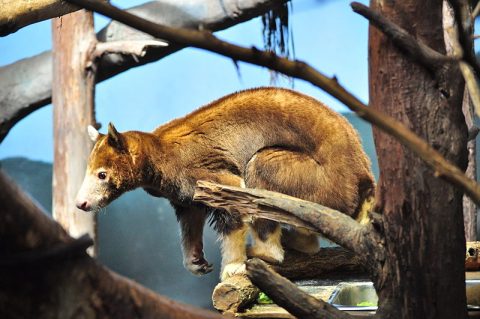
Want to share all this interesting animal info with your students? Request our Endemic Animals Around the World classroom map by clicking here.
Related Articles

Rise Up, Take Action: How to Support the LGBTQIA+ Community
“Endemic” refers to a species that is uniquely found in one part of the world, and that part only! These types of animals are most commonly found in more isolated parts of the globe, like islands,...
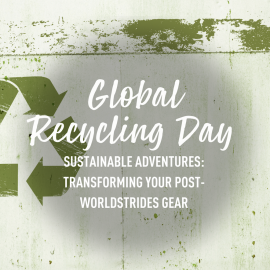
Global Recycling Day: Transforming Your Post-WorldStrides Gear
“Endemic” refers to a species that is uniquely found in one part of the world, and that part only! These types of animals are most commonly found in more isolated parts of the globe, like islands,...

Envision by WorldStrides Announces Scholarship Program with Horton’s Kids to Provide Life-Changing, Career-Focused Experiences
“Endemic” refers to a species that is uniquely found in one part of the world, and that part only! These types of animals are most commonly found in more isolated parts of the globe, like islands,...

Celebrating National Women Support Women Day – A Call to Empower
“Endemic” refers to a species that is uniquely found in one part of the world, and that part only! These types of animals are most commonly found in more isolated parts of the globe, like islands,...

